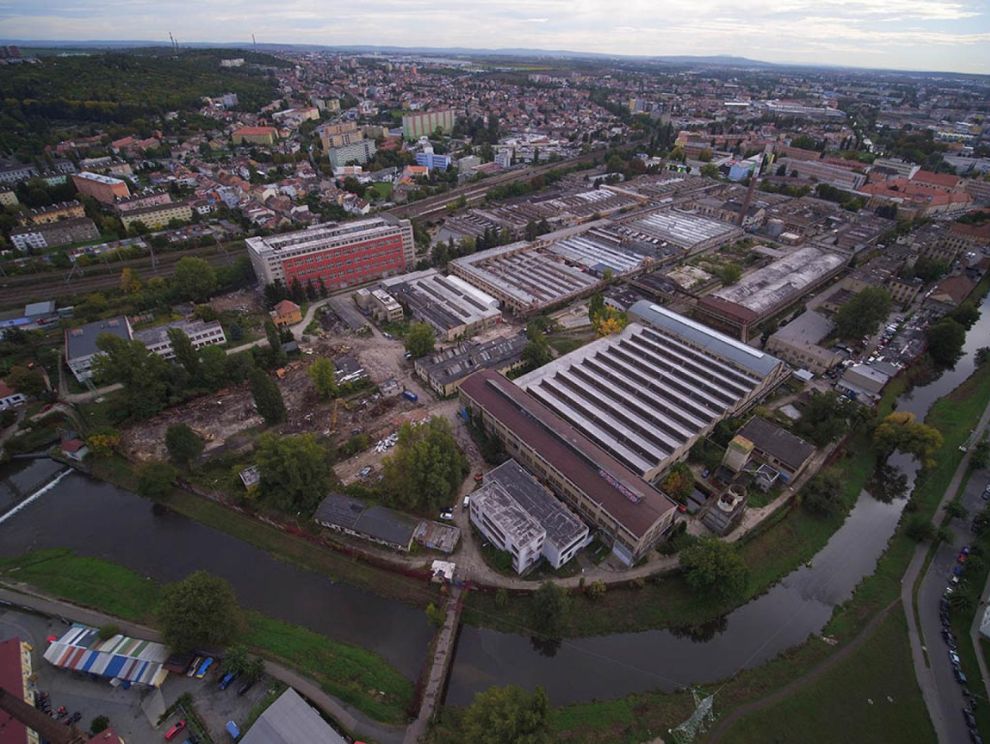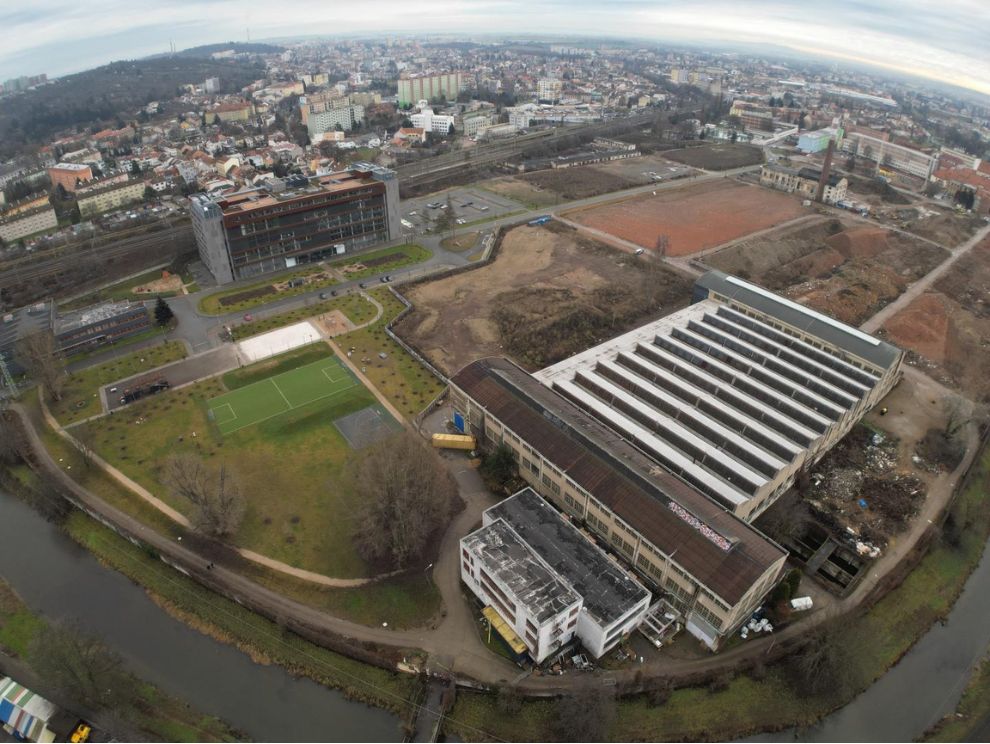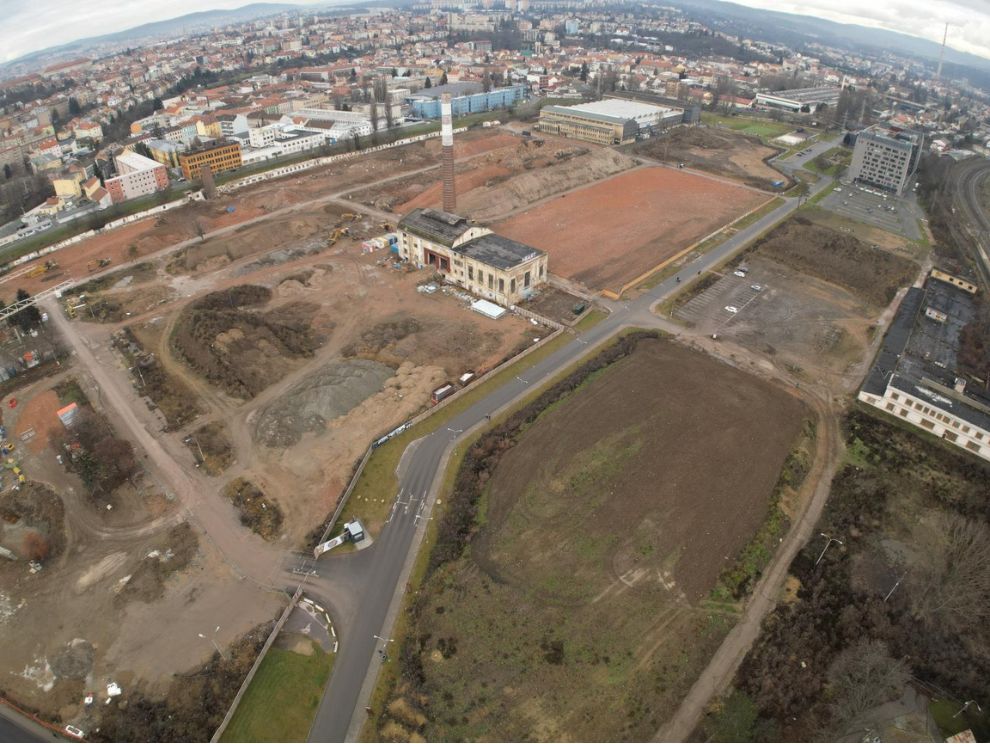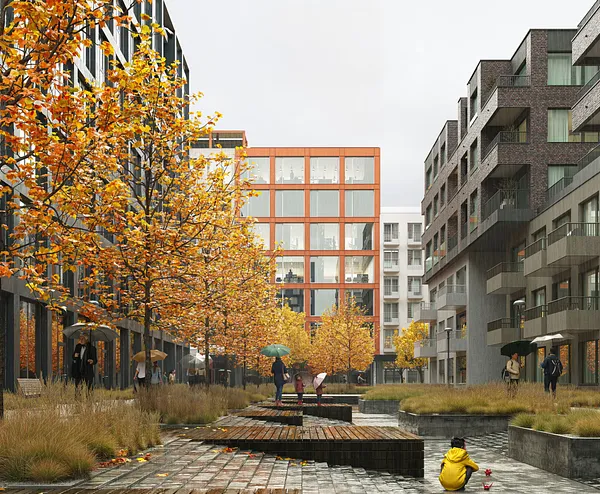What’s so brown about brownfields? Mud?
The official definition of a brownfield site is as follows: real property (a territory, plot of land, building or area) that is unused, neglected and may be contaminated. A brownfield is formed as a remnant of industrial, agricultural, residential, military or other activity (Source: CzechInvest). According to the National Brownfield Database, there are more than 4,000 such sites in the Czech Republic and around 280 are added each year. With its size and density of original development, Nová Zbrojovka is one of the largest. To give you some idea. The average Czech brownfield site has an area of 3 ha. Nová Zbrojovka covers an area approximately 7.5 times larger.
Brownfields, despite their neglect or contamination, often have a very attractive location. Their restoration, although time- and money consuming, offers great potential. This is also the case with Nová Zbrojovka. The factory originally stood on the outskirts of Brno. But the town grew rapidly during the 20th century and surrounded Zbrojovka from all sides. The former periphery became part of the wider city centre. And this is the kind of location you want to develop. But there are a number of processes that need to be done before that can happen. Back to our original recycling metaphor – you need to prepare the old for the production of the new. In the case of a brownfield site, these preparatory processes are demolition and remediation.
 |  |
It must come down
The neighbourhood you know from our visualisations will arrive here in approximately 15 years and after an outlay of 25 billion crowns. It will consist of 110 buildings in 23 blocks. Transformed from a factory to a lively part of town. It sounds far-fetched, but we’ve been working hard on it for 5 years.
Demolition is definitely the most visible part of the preparations. Originally there were 110 buildings. We often read on our social media that we’re tear everything down willy nilly. That’s not the case, of course. Demolition was preceded by a thorough pre-demolition audit. This assessed each building in the area – specifically their condition, the quantity and type of all materials contained in them, as well as their potential for reuse. We got a demolition notice for the whole area. We’ve written this before, but it never hurts to repeat it. Despite the demolition notice, we decided to preserve and reconstruct 4 buildings to safeguard the historical legacy of Zbrojovka. The other buildings came down either because of poor structural design, pollution, or they simply didn’t fit into the concept of the planned development. It’s not easy to find a use for production halls in a modern district.
 |  |
What we demolish, we also use
When the forest is cut down, splinters fly, as the Czechs say. And when a building is demolished, rubble is created. Lots of rubble. But we certainly don’t see that as waste. On the contrary. Concrete and bricks are crushed and we’ll continue to use them for landscaping, building foundation reinforcements or building recycled street furniture. We’re recycling not only the territory, but also the material. Otherwise, removing this rubble each year would come to about as many as 10,000 truckloads. We currently use about 15% of the rubble. Legislation prevents us from using it more effectively. However, we’re storing the rubble directly on the site in heaps and we believe that in the future we’ll get up to 60% use. The other 40% cannot be used due to pollution.
What is remediation?
Let’s be honest, the capture of harmful substances released during production was not a big priority in the old days. Chlorinated hydrocarbons, chromium and various oils thus entered not only the structures of buildings, but also the soil itself. And that’s a problem. It represents an environmental burden that must be removed, i.e. so-called remediation. Remediation will restore the soil to its original or better condition. This is important not only for construction, but also to support future ecosystems and green spaces.
Something like this doesn’t happen overnight, of course. Moreover, the entire process is subject to strict controls. Remediation methods are numerous and are combined to obtain optimal results. We carried out remediation on-site, i.e. directly on the territory of Nová Zbrojovka. Some of the substances were removed chemically. For others it was necessary to mix them with recyclate and wait until they gradually weathered and evaporated. The Czech Environmental Inspection Authority regularly inspects soil samples. You don’t get a stamp until it’s completely rehabilitated. You don’t get a building permit without a stamp. And you don’t build without a building permit.
 |  |
Why all this palaver? or why brownfield is better than greenfield?
This year we completed the last major phase of demolition and remediation work in Nová Zbrojovka. We’re 95% done. It took us 5 years to get to a zero state and move on to the next stage of our “recycling” – breaking earth. If you’ve read this far, you’re sure to be wondering: why go to all this trouble when you could start building elsewhere right now? Because it’s worth it. Yes, the initial cost of brownfield restoration is higher than building on greenfield land, i,e. previously undeveloped land. However, by restoring brownfield sites, we bring back to life the “territory of the dead”, we develop the city and create a place that is attractive for living, working, doing business and thriving. We make a rug out of a PET bottle and build where it makes sense.
To give you an idea, if Zbrojovka workers lived 20 km outside the city and commuted by car, they would each produce about 1.5 tonnes of CO2 emissions (with car emissions at 150 g of CO2 per km). About 20,000 people will be coming into Nová Zbrojovka every day. So, that’s about 15,000 tons of CO2 (for nitpickers, we reckon not everyone would drive and some would car-share). Which is a lot. The next thing is cost. A car costs money, and your time isn’t free either. And then there are the enormous costs to the city, the district or, by extension, the investor. For greenfields it’s necessary to newly build a complete set of infrastructure and services – utility connections, public transport, waste collection, road management, etc. Believe me, the list is rather long. Add to that the fact that you’re taking land that could be used differently, creating more heat islands, preventing water from infiltrating. Well, think about how you’d cope: Wolt doesn’t deliver to you, you pay extra for the Rohlík shopping delivery service, there is no parking spot for a Bolt scooter, and an Uber driver won’t even accept your ride. Concerts, great food and drink – once in a blue moon maybe.
"Recycled" Nová Zbrojovka doesn’t have to deal with such problems. Here we’re developing a locality that like-it-or-not is already part of the city. Thanks to its location, Nová Zbrojovka is connected to its surroundings – you can walk from Brno main railway station in 20 minutes, there are infrastructure, services and transport connections that we can build on and develop further. We become a partner to the city, not a burden. Over the next 15 years, this place will change beyond recognition. An inspiring and modern neighbourhood will grow here, a place where people will want to live and work, have fun and relax. But also a place that values history. Simply a place where old and new combine to make something magnificent.







